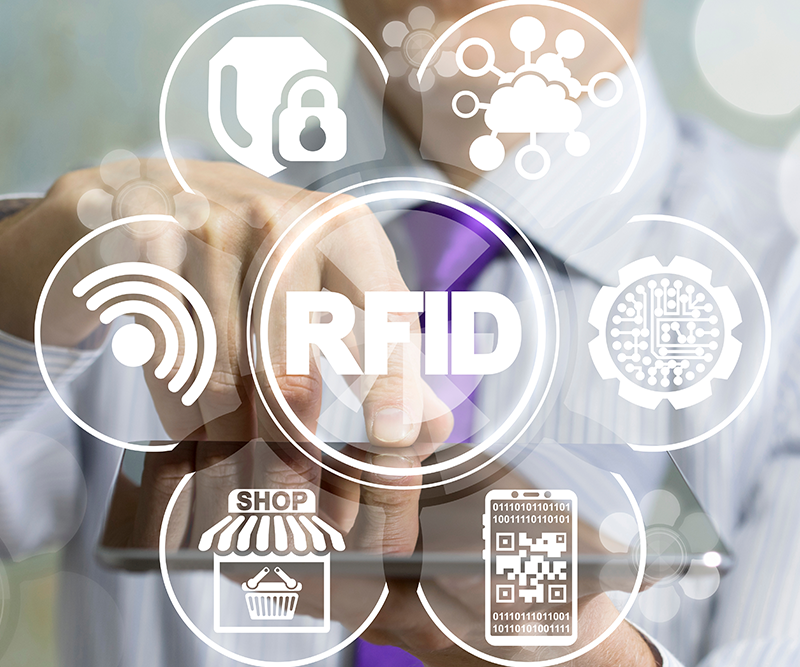Enhance customer experience with RFID as new weapon in fashion.
An international scientific benchmark shows RFID applications of Dutch fashion companies in an international perspective.
Fashion companies in the Netherlands are leading the way internationally by also using RFID for visual merchandising and improving the customer experience. They also see their turnover and their stock accuracy increase due to the use of RFID. These are the most striking conclusions from the large international survey ‘RFID barometer in retail’.
The University of Parma has been analysing the global use of RFID in the fashion sector for more than 20 years. The result is a benchmark that provides a good insight into RFID usage in fashion. The study ‘Benchmarking RFID adoption in Benelux with worldwide projects’ conducted by the RFID Lab and GS1 Netherlands now includes the experiences of 21 Dutch companies (40 projects).
Today’s global and omni-channel retail market demands continuous improvement of the supply chain. Recent Covid-19 emergency has put additional pressure on operations. RFID technology is playing an increasingly important role in the effort to improve operational efficiencies, increase safety, and boost business processes, especially in the fashion and apparel retail industry.
Dutch RFID-driven companies see turnover increase
The research found that Dutch retailers mostly deploy RFID to optimize out-of-stocks and inventory accuracy (30 out of 40 projects), increase process automation (25 out of 40 projects) and to manage omni-channelling (19 out of 40). Examples of omni-channel activities in which RFID can play a role are ‘click-and-reserve’ and ‘ship-from-store’. Out-of-stock/inventory accuracy and process automation have been core use cases for several years.
The benefits for the companies using RFID range from process time reduction to increase in sales and turnover. The main advantages reported by the Dutch companies:
- Turnover increase from 3-10%
- Average inventory accuracy rate above 97%
- Process time reduction
- Increased process accuracy
- Cancellation rate reduction for online orders
Commercial opportunities in visual merchandising and customer experience
Dutch companies also see potential in new applications of RFID. Especially visual merchandising and improving the customer experience are seen as new opportunities. With RFID you can improve the customer experience and make your shop an attractive environment because you can make more information about your products available to customers.
Loek Boortman, CTO GS1 Netherlands: “Fashion retailers are looking for new innovative and interactive ways to give consumers a good customer experience. In corona time, this is now more topical than ever. With RFID you have the solution in your hands. From a personal welcome, to relevant advice based on purchase history and a quick check out, from suggestions for combining items to insight into the store stock and smart mirrors. It’s great to see that companies are now discovering this potential of RFID.”
Benchmark for laggards convincing evidence
According to the joint research 8% of the retailers involved in the study were doing proofs of concept, 33% were in the pilot phase, 12% had chosen to do phased deployments while 47% had completed full deployments.
Dutch retailers are moving beyond the early adoption phase, which means that end-users, still not approaching RFID, risk to find themselves behind their competitors if they wait much longer before exploring the technology.
Loek Boortman: “There’s a time when you have to step in as a company. The results achieved by companies using RFID are so convincing that nothing stands in the way of implementation anymore. The benchmark shows that the use of this smart technology really helps companies to improve processes and grow turnover.”
Prof. Antonio Rizzi, RFID lab University of Parma, and Giovanni Romagnoli, research coordinator: “The collaboration with GS1 Netherlands has allowed us to add data to the current barometer database increasing its reach and quality. Since the beginning of our research, the objective has always been to draw an up-to-date picture of the RFID adoption in the retail market. GS1 enriches our research with an important contribution in terms of quality data, that we find to be in line with and confirm the outcomes of our worldwide research and that it’s worth getting on the RFID boat”.
A short clip illustrating the research


